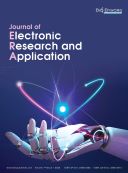Abstract
Convolutional neural networks (CNNs) are widely used to tackling complex tasks, which are prone to overfitting if the datasets are noisy. Therefore, we propose folding fan cropping and splicing (FFCS) regularization strategy to enhance representation abilities of CNNs. In particular, we propose two different methods considering the effect of different segmentation numbers on classification results. One is the random folding fan method, and the other is the fixed folding fan method. Experimental results showed that FFCS reduced the classification errors both with the value of 0.88% on CIFAR-10 dataset and 1.86% on ImageNet dataset. Moreover, FFCS consistently outperformed Mixup and Random Erasing approaches on classification tasks. Therefore, FFCS effectively prevents overfitting and reduces the impact of background noises on classification tasks.
References
LeCun Y, Bottou L, Bengio Y, et al., 2021, Gradient-Based Learning Applied to Document Recognition. Proceedings of the IEEE, 2278¬–2324.
Steiner A, Kolesnikov A, Zhai X, et al., 2021, How to Train Your ViT? Data, Augmentation, and Regularization in Vision Transformers. Transactions on Machine Learning Research. ArXiv. https://doi.org/10.48550/arXiv.2106.10270
Thanh DNH, Thanh LT, Nguyen NH, et al., 2020, Adaptive Total Variation L1 Regularization for salt and Pepper Image Denoising. Optik, 208: 163677.
Lewkowycz A, Gur-Ari G, 2020, On the Training Dynamics of Deep Networks with L2 Regularization. 34th Conference on Neural Information Processing Systems, 4790–4799.
Morerio P, Cavazza R, Volpi R, et al., 2017, Curriculum Dropout.2017 IEEE International Conference on Computer Vision (ICCV), 3564–3572.
Wan L, Zeiler M, Zhang S, et al., 2013, Regularization of Neural Networks using DropConnect. Proceedings of International Conference on Machine Learning, 1058–1066.
Murugan P, Shanmugasundaram D, 2017, Regularization and Optimization Strategies in Deep Convolutional Neural Network. ArXiv. https://doi.org/10.48550/arXiv.1712.04711
Zhang Z, Li X, Zhang H, et al., 2021, Triplet Deep Subspace Clustering via Self-Supervised Data Augmentation. Proceedings of 2021 IEEE International Conference on Data Mining (ICDM), 946–955.
Sivaraman A, Kim S, Kim M, 2021, Personalized Speech Enhancement Through Self-Supervised Data Augmentation and Purification. Proceedings of INTERSPEECH, 2676–2680.
Bari Saiful M, Mohiuddin T, Joty ST, 2020, UXLA: A Robust Unsupervised Data Augmentation Framework for Zero-Resource Cross-Lingual NLP. Proceedings of the 59th Annual Meeting of the Association for Computational Linguistics and the 11th International Joint Conference on Natural Language Processing, 1978–1992. https://doi.org/10.18653/v1/2021.acl-long.154
Lowell D, Howard B, Liptopn ZC, et al., 2021, Unsupervised Data Augmentation with Naive Augmentation and without Unlabeled Data. Proceedings of the 2021 Conference on Empirical Methods in Natural Language Processing, 4992–5001.
Devries T, Taylor GW, 2017, Improved Regularization of Convolutional Neural Networks with Cutout. ArXiv. https://doi.org/10.48550/arXiv.1708.04552
Zhang H, Cisse M, Dauphin YN, et al., 2018, mixup: Beyond Empirical Risk Minimization. ArXiv. http:/doi.org/10.48550/arXiv.1710.09412
Singh KK, Yu H, Sarmasi A, 2018, Hide-and-Seek: A Data Augmentation Technique for Weakly-Supervised Localization and Beyond. ArXiv. https://doi.org/10.48550/arXiv.1811.02545
Yun S, Han D, Oh SJ, et al., 2019, CutMix: Regularization Strategy to Train Strong Classifiers with Localizable Features. Proceedings of the 2019 IEEE/CVF International Conference on Computer Vision (ICCV), 6022–6031.
Zhong Z, Zheng L, Kang G, et al., 2017, Random Erasing Data Augmentation. Proceedings of the Thirty-Fourth AAAI Conference on Artificial Intelligence (AAAI-20), 13001–13008.
Chen P, Liu S, Zhao H, et al., 2020, GridMask Data Augmentation. ArXiv. https://doi.org/10.48550/ arXiv.2001.04086
Li P, Li X, Long X, et al., 2020, FenceMask: A Data Augmentation Approach for Pre-extracted Image Features. ArXiv. https://doi.org/10.48550/arXiv.2006.07877
Hendrycks D, Mu N, Cubuk ED, et al., 2019, AugMix: A Simple Data Processing Method to Improve Robustness and Uncertainty. ArXiv. https://doi.org/10.48550/arXiv.1912.02781
Gong C, Wang D, Li M, et al., 2021, KeepAugment: A Simple Information-Preserving Data Augmentation Approach. Proceedings of the 2021 IEEE/CVF Conference on Computer Vision and Pattern Recognition (CVPR), 1055–1064.
Zhu J-Y, Park T, Isola P, et al., 2017, Unpaired Image-to-Image Translation using Cycle-Consistent Adversarial Networks. Proceedings of the 2017 IEEE International Conference on Computer Vision (ICCV), 2242–2251.
Mirza M, Osindero S, 2014, Conditional Generative Adversarial Nets. ArXiv. https://doi.org/10.48550/ arXiv.1411.1784
Cubuk ED, Zoph B, Mané D, et al., 2019, AutoAugment: Learning Augmentation Strategies from Data. Proceedings of the 2019 IEEE/CVF Conference on Computer Vision and Pattern Recognition (CVPR), 113–123.
Lim S, Kim I, Kim T, et al., 2019, Fast AutoAugment. 33rd Conference on Neural Information Processing Systems (NeurIPS 2019), 1–11.
Cubuk ED, et al., Randaugment: Practical Automated Data Augmentation with a Reduced Search Space. Proceedings of the 2020 IEEE/CVF Conference on Computer Vision and Pattern Recognition Workshops (CVPRW), 3008–3017.
Buslaev AV, Parinov A, Khvedchenya E, et al., 2018, Albumentations: Fast and Flexible Image Augmentations. ArXiv. https://doi.org/10.48550/arXiv.1809.06839
Takahashi, Ryo et al. RICAP: Random Image Cropping and Patching Data Augmentation for Deep CNNs. Proceedings of the 10th Asian Conference on Machine Learning, 785–798.
Zagoruyko S, Komodakis N, 2015, Wide Residual Networks. ArXiv. https://doi.org/10.48550/ar Xiv.1605.07146
He K, Zhang X, Ren S, et al., 2016, Deep Residual Learning for Image Recognition. Proceedings of 2016 IEEE Conference on Computer Vision and Pattern Recognition (CVPR), 770–778.
Lee C-Y, Xie S, Gallagher P, et al., 2014, Deeply-Supervised Nets. ArXiv. https://doi.org/10.48550/arXiv.1409.5185
Romero A, Ballas N, Kahou SE, et al., 2014, FitNets: Hints for Thin Deep Nets. ArXiv. https://doi.org/10.48550/arXiv.1412.6550
Springenberg JT, Dosovitskiy A, Brox T, et al., 2014, Striving for Simplicity: The All Convolutional Net. ArXiv. https://doi.org/10.48550/arXiv.1412.6806
He K, Zhang X, Ren S, et al., 2015, Delving Deep into Rectifiers: Surpassing Human-Level Performance on ImageNet Classification. Proceedings of the 2015 IEEE International Conference on Computer Vision (ICCV),1026–1034.
Russakovsky O, Deng J, Su H, et al., 2015, ImageNet Large Scale Visual Recognition Challenge. International Journal of Computer Vision, 115: 211–252.
